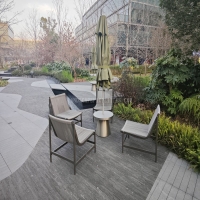Welcome to the website for landscape facilities products and knowledge.
How does the table’s design account for the potential impact of nearby construction or demolition sites?
Modern table engineering incorporates sophisticated design principles to withstand challenges from adjacent construction and demolition activities. Manufacturers implement multiple protective strategies beginning with advanced vibration damping systems that absorb and dissipate energy from nearby heavy machinery operation and impact tools. These systems often utilize specialized elastomeric materials and mechanical isolators positioned at critical stress points.
The structural framework itself undergoes rigorous reinforcement through additional cross-bracing, thicker gauge metals, and strategic gusset placements that collectively enhance torsional rigidity. Material selection plays an equally crucial role, with many industrial-grade tables utilizing high-density laminates, solid core substrates, and impact-resistant edge banding that maintain integrity despite airborne debris and dust particles.
Leg leveling systems evolve to include hydraulic or pneumatic adjustment mechanisms that automatically compensate for minor ground settlement or shifting foundations - common occurrences near excavation sites. Surface treatments further contribute to durability, with chemical-resistant coatings protecting against construction-related pollutants and scratch-resistant finishes maintaining appearance despite abrasive particles.
For environments experiencing extreme vibration, some manufacturers incorporate suspended weight distribution systems that effectively separate the table's working surface from its base structure, dramatically reducing vibration transmission. Additionally, reinforced joint connections using epoxy-based adhesives combined with mechanical fasteners create bonds that withstand the constant subtle movements induced by nearby heavy equipment.
The integration of these design elements demonstrates how contemporary furniture engineering proactively addresses the unique challenges presented by active construction zones, ensuring tables maintain functionality and longevity despite environmental disturbances. Through comprehensive testing simulating various construction scenarios, manufacturers verify these protective measures effectively preserve table performance and structural integrity throughout the product lifecycle.
Related search:

Recommendation
Metal structure rattan chair without armrests for single person, with woven seat and backrest.